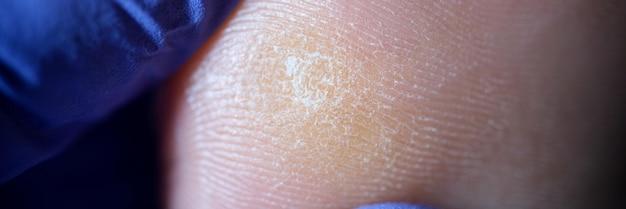Fiberglass is a commonly used material in various industries, from construction to insulation. While it offers excellent insulation properties, it can also pose some risks, especially if it comes in contact with your skin. The tiny fibers of fiberglass can cause irritation and discomfort, and getting them out of your skin can be a tricky task. In this blog post, we will explore the question of how long it takes to get fiberglass out of your skin and provide some useful tips for effective removal.
We will also discuss related topics such as the potential health hazards of breathing in fiberglass particles, the presence of fiberglass in certain products like mattresses and face masks, and the best methods for cleaning fiberglass dust. So, if you’ve ever wondered about the lingering effects of fiberglass on your skin or want to learn more about managing fiberglass exposure, keep reading!
How Long Does It Take to Rid Your Skin of Pesky Fiberglass
If you’ve ever worked with fiberglass, you know it can be a real pain – literally! Those tiny, prickly fibers have a way of getting under your skin and causing a world of discomfort. So, how long does it take to get fiberglass out of your skin? Let’s dive into this itchy topic and uncover the answers you’re itching for.
The Initial Encounter: Feeling the Sting
The first thing you’ll notice after coming into contact with fiberglass is the unmistakable tingling sensation on your skin. It’s like being tickled by dozens of microscopic needles. This feeling can be particularly aggravating if you have sensitive skin or are prone to allergic reactions. However, don’t worry, this initial discomfort won’t stick around forever.
The Itch Begins: The Fiberglass Adventure
As time passes, the initial sting may give way to an itching sensation. It’s like having a secret itch that you just can’t quite scratch. This is when you’ll start to question your life choices that led you to cross paths with fiberglass in the first place. But fret not, my friend, because relief is on the horizon.
The Waiting Game: Patience is Key
When it comes to getting fiberglass out of your skin, the waiting game is an essential part of the process. Your body’s natural defense mechanism will kick into gear, and over time, it will work to expel the intruding fibers.
The Battle Plan: Steps to Encourage the Exit
While your body does its thing, there are steps you can take to accelerate the process and ease your discomfort:
1. Rinse it Out
Start by rinsing the affected area with lukewarm water. This can help dislodge some of the fibers and provide temporary relief from the itchiness.
2. Tape it Up
Using sticky tape, gently press it against your skin and then peel it off. This method can help pull out some of the superficial fiberglass fibers. Just be careful not to irritate the skin further, as excessive taping can do more harm than good.
3. Patience, My Friend
Remember, patience is key. It may take several days or even weeks for your body to completely eliminate the fiberglass on its own. In the meantime, resist the temptation to scratch or pick at the affected area, as this can introduce bacteria and potentially lead to infection.
The Resolution: Goodbye, Fiberglass!
Eventually, your body will triumph over those stubborn fiberglass fibers, and you’ll find yourself free from their itchy grip. The exact timeline can vary from person to person, but on average, it can take anywhere from a few days to a couple of weeks for the discomfort to subside.
So, how long does it take to get fiberglass out of your skin? While there’s no exact answer, the key is to be patient and let your body do its thing. In the meantime, you can try some home remedies to alleviate the itchiness and wait for the victory of fiber-free skin. Just remember, the battle against fiberglass is one that can be conquered – and your skin will thank you for it!
Goodbye, pesky fiberglass, and hello, itch-free skin!
Keywords: how long does it take to get fiberglass out of your skin, rid your skin of fiberglass, itch begins with fiberglass, waiting game with fiberglass, steps to encourage fiberglass exit, resolution with fiberglass
FAQ: How Long Does It Take To Get Fiberglass Out Of Your Skin
Getting fiberglass lodged in your skin can be a pesky and uncomfortable experience. Whether it’s from working with insulation, handling certain products, or encountering fiberglass-containing materials, the question that lingers in your mind is: How long does it take to get fiberglass out of your skin? In this FAQ-style guide, we’ll address this burning question and more. So, let’s dive right in!
Does Avenco mattress have fiberglass
No, Avenco mattresses do not contain fiberglass. They prioritize your comfort and safety, ensuring a good night’s sleep without any unwanted surprises.
How do you treat fiberglass inhalation
If you accidentally inhale fiberglass particles, it’s crucial to seek medical attention immediately. The tiny fibers can irritate your respiratory system and cause discomfort. A healthcare professional will be able to assist you in treating any potential symptoms or complications.
Is it bad to breathe in attic insulation
Breathing in attic insulation, particularly if it contains fiberglass, can be harmful. Fiberglass fibers can irritate your airways and cause respiratory distress. It’s essential to wear proper protective gear when working with insulation and take precautions to minimize the risk of inhalation.
Can you be allergic to fiberglass
Yes, some individuals may develop an allergic reaction to fiberglass. Symptoms may include skin irritation, redness, itching, and respiratory issues. If you suspect you may be allergic to fiberglass, consult a healthcare professional for guidance.
Do N95 masks have fiberglass in them
No, N95 masks do not contain fiberglass. These masks are designed to filter out airborne particles, including those as small as 0.3 microns. They are widely used for respiratory protection and do not pose a risk of fiberglass exposure.
Does cool gel mattress have fiberglass
No, cool gel mattresses do not contain fiberglass. The cooling properties of these mattresses are provided by innovative materials and technologies, ensuring a comfortable and refreshing sleep experience.
Why is fiberglass a good insulator
Fiberglass is an excellent insulator due to its properties. The material effectively traps pockets of air, which slows down the transfer of heat or cold. This insulation capability makes fiberglass widely used in various applications, including construction, automotive, and HVAC systems.
Does fiberglass stay in your lungs
Fiberglass particles can remain in your lungs if inhaled. Once lodged, your body’s natural defenses may have difficulty removing them. It’s crucial to seek medical attention if you suspect fiberglass inhalation, as professional assistance is necessary for proper evaluation and potential treatment.
What happens if you get fiberglass in your skin
When fiberglass gets embedded in your skin, it can cause irritation, itching, and redness. These tiny fibers can be challenging to remove and may require specific techniques to ensure complete extraction.
What is the best way to get fiberglass out of your skin
To remove fiberglass from your skin, follow these steps:
- Wash the affected area gently with mild soap and warm water.
- Use a soft cloth or tweezers to carefully lift the fibers from the skin’s surface.
- Apply a layer of adhesive tape to the area; gently press and lift it to remove any remaining fibers.
- Rinse the area again and apply a soothing ointment or cream to alleviate any discomfort.
Remember, if the irritation persists or worsens, it’s best to consult a healthcare professional.
Will fiberglass come out of skin on its own
In some cases, superficial fiberglass particles may work their way out of the skin naturally over time. However, this can vary depending on various factors such as the size of the fibers and how deeply embedded they are. It’s generally recommended to actively remove the fibers to avoid prolonged discomfort or potential complications.
Is blown-in insulation safe to breathe
While blown-in insulation can contain fiberglass, it is typically safe as long as it remains undisturbed. However, it’s crucial to exercise caution and avoid inhaling any airborne particles during installation or if the insulation becomes damaged.
Is there fiberglass in face masks
No, face masks do not typically contain fiberglass. Facial masks, whether disposable or reusable, focus on providing filtration and protection, utilizing materials suitable for respiratory applications while avoiding any potential harm from fiberglass exposure.
How do you clean fiberglass dust
Cleaning up fiberglass dust requires a delicate approach to avoid spreading the particles further. Follow these steps:
- Wear protective gloves and a mask to minimize contact and inhalation.
- Dampen a cloth or sponge with soapy water.
- Gently wipe the affected surfaces, ensuring not to agitate the dust.
- Rinse the cloth or sponge frequently.
- Dispose of any contaminated materials properly.
What is fiberglass dermatitis
Fiberglass dermatitis, also known as irritant contact dermatitis, refers to the skin irritation caused by contact with fiberglass particles. It can result in redness, itching, and rashes. Proper cleaning and removal techniques, as mentioned earlier, can help alleviate the symptoms.
How does vinegar remove splinters
Vinegar’s acidic nature can help soften the skin around a splinter, making it easier to remove. Soak the affected area in vinegar for approximately 20 to 30 minutes, and the splinter may become more accessible for gentle extraction.
Why is calamine lotion pink
Calamine lotion gets its distinct pink color from added ingredients like ferric oxide. This soothing topical medication helps relieve itching and irritation caused by various skin conditions, including fiberglass dermatitis.
Does vinegar remove fiberglass from skin
Vinegar can help loosen and dislodge fiberglass particles from the skin. Soak the affected area in vinegar for a short period, then rinse thoroughly with water to remove any remaining fibers. Remember, though, that vinegar may not be effective for all cases, so it’s essential to seek appropriate medical advice if needed.
What is fiberglass used for
Fiberglass finds widespread use in several industries and applications, including:
- Construction: Insulation, roofing materials, and reinforcements for concrete.
- Automotive: Manufacturing body parts, interiors, and insulation for automobiles.
- Manufacturing: Production of boats, aircraft, pipes, tanks, and electrical insulation.
- Aerospace: Building aircraft structures, spacecraft, and components.
- Recreation: Creating pools, hot tubs, sporting equipment, and musical instruments.
Do ghost beds contain fiberglass
No, Ghost beds do not contain fiberglass. These innovative mattresses prioritize comfort, support, and a restful sleeping experience without exposing you to any unwanted fiberglass-related issues.
Should you wear a mask when cutting fiberglass
Yes, wearing a mask when cutting fiberglass is highly recommended. The process can generate fine particles that, if inhaled, can irritate your respiratory system. Protect yourself by using appropriate respiratory protective equipment, such as an N95 mask.
Why is there fiberglass on my mattress
In certain cases, fiberglass may be present in mattresses as a fire-resistant component. However, this is not an issue with all mattresses. To ensure a fiberglass-free mattress, choose reputable brands that prioritize safety and undergo thorough testing.
Do N95 masks have fiberglass in them
No, N95 masks are specifically designed to offer respiratory protection without any fiberglass content. These masks adhere to strict manufacturing standards and are widely trusted for their reliable filtration capabilities.
Getting fiberglass out of your skin may require some patience and proper techniques, but it is essential to avoid prolonged discomfort or potential complications. By following the recommended steps and seeking professional help if necessary, you can successfully address any fiberglass-related skin concerns. Remember to always prioritize your safety and consult a healthcare professional for personalized advice.

